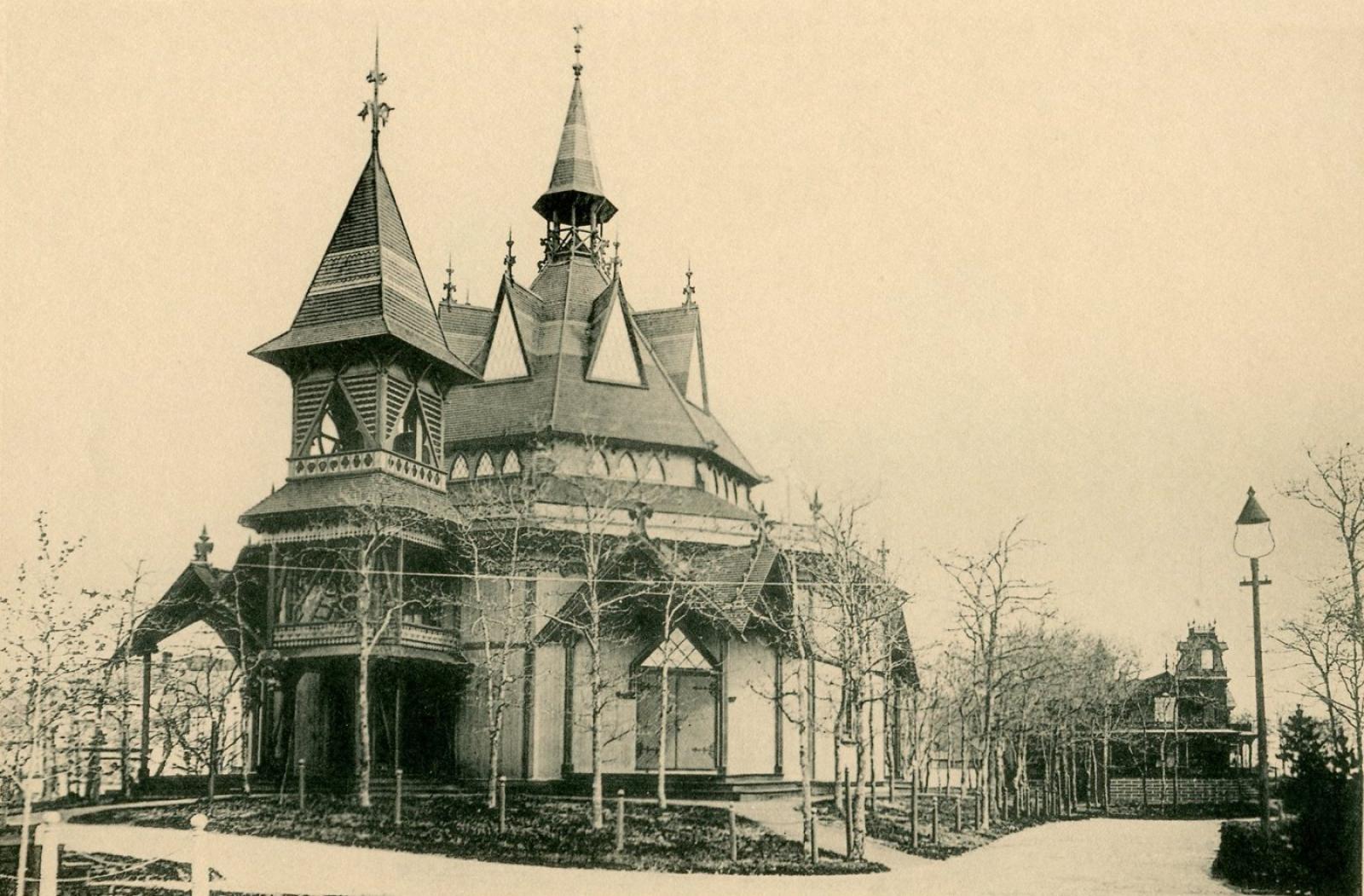The new pews are still empty, and the fresh pine they are built from won’t begin to creak until parishioners arrive later this month, adding their imprint to the long history of the Union Chapel in Oak Bluffs.
Owned by the Martha’s Vineyard Preservation Trust, the chapel is halfway through a restoration project intended to return the rare octagonal Victorian church to its former glory. Over the winter new pine pews were installed, modeled after the original late 19th century benches, along with new Gothic and triangular windows in the clerestory level of the church.
“The joy of this and most interesting part of this project is in our business we get to take care of some really fine landmark architecture on Martha’s Vineyard,” said Chris Scott, executive director of the preservation trust, which bought the property at the head of Kennebec avenue in 2002. “This is a cathedral and you don’t get many opportunities in my line of work to restore a cathedral,” he said.
Mr. Scott said it will take another 10 years to complete the work, which will eventually become a top-to-bottom historic restoration. To date the trust has raised $500,000 toward the project, while parishioners who use the chapel separately have raised $70,000.
Designed by Boston architect Samuel Freeman Pratt, the chapel was built in 1870 at a cost of $16,000 on a mound of land known as Chapel Hill. The original building had a tall steeple with matching finials on the triangular windows, intricate wood carvings on the balconies and a large bell tower. The church was built as the focal point of what is today the Copeland District, an area designed by Robert Morris Copeland in the Frederick Law Olmstead park tradition of open spaces and twisting streets. It was built in conjunction with four or five spec houses and the church was part of the sales pitch. An original 1871 map is still glued to the ladies’ room downstairs, with a frame and glass placed over it for preservation.
“A prospective buyer would go there and you could stand on your lot, see the Sound and Ocean Park and imagine your family going to Union Chapel on Sundays, which was the custom,” Mr. Scott said. “And so the developers wanted it to be impressive and they wanted it to be a showpiece.”
The chapel was built during a time when summer visitors came to the Vineyard by steamer and flocked to the Methodist camp meetings in the neighboring Camp Ground, where the historic Tabernacle, built in 1879, still stands. Concerned about fostering a quiet and dedicated religious environment, the Methodists built a fence around the Camp Ground to separate dedicated practitioners from the rest of the town.
Lacking a central chapel, the Oak Bluffs Land and Wharf Co. decided to build a chapel for all forms of theology to practice. To this day it remains a nondenominational place of worship and is also used for a wide array of nonreligious events, including lectures and the annual Built on Stilts summer dance festival.
But upkeep of such an architecturally complex building is expensive, and Mr. Scott said over the years eventually the bell tower rotted, and instead of being repaired it was removed. The steeple blew off in the hurricane of 1938, and the Gothic windows were replaced with less costly rectangular ones when they needed to be repaired. Victorian fretwork was also removed.
Despite all that, the chapel was placed on the National Register of Historic Places in 1990. It is the only octagonal-shaped building on the Vineyard.
“It’s a neat project, we never had a building that was so altered by subtraction of detail,” Mr. Scott said. “It’s a beautiful building . . . but there’s a lot missing. It will be a lot more beautiful [when the work is done].”
Piece by piece, the trust plans to restore most of the building’s original features.
This winter 24 new clerestory Gothic windows fabricated in Florida with amber glass were installed. The same glass was used in the new triangular windows as well.
“It took awhile, but we found glass that matched the original amber glass,” said Mr. Scott. “With a speckled pattern on it, it makes a huge difference in the interior, particularly during the day as the sun moves around the building, these shafts of yellow light illuminate the interior and then at night when you have the lights on, it’s just this beacon that pumps out yellow light.”
The pews downstairs had been replaced with cane chairs. Now there are 60 new pews throughout the church, largely paid for by donations from parishioners.
New yellow pine floors have been laid over linoleum floors dating to World War II, Mr. Scott said.
The next project will likely be removing exterior cedar shingles and replacing them with painted vertical boards. The building was originally a canary yellow with crimson trim, Mr. Scott said, although the renovation plan calls for painting the exterior a neutral putty color with white trim.
“There’s a balancing act, historical accuracy is important I think,” Mr. Scott said. “Shingles are not appropriate for big cathedrals — which is what this building is, a Victorian cathedral — and the vertical boards are going to make the building look a lot more impressive and draw the eye up.”
The roof, which was originally “beautiful three-colored painted shingles,” will also be restored. Mr. Scott said he’s considering using architectural-grade asphalt in a color pattern.
Restoring the 96-foot tall spire is also high on the list. It will be an engineering piece, Mr. Scott said, and likely be “really strong but really light” molded aluminum.
Through all the changes at the old Union Chapel, there has been one constant, Mr. Scott said.
“The space is still being used as it was originally intended — a place for people to gather.”







Comments
Comment policy »